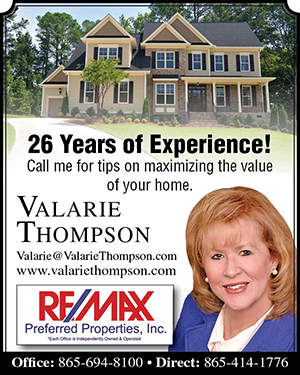BOMA view Vice Mayor
Defining CLUP, zoning ordinances; ties to Biddle property
There are several tools the Farragut Municipal Planning Commission and the Board of Mayor and Aldermen utilize when making land use decisions. Arguably, the two most important tools are the Comprehensive Land Use Plan (CLUP) and the zoning ordinance. While they are related, the land use designations in the CLUP and the zoning districts in the zoning ordinance are two distinct and separate concepts.
The Comprehensive Land Use Plan is the community’s visionary document about how they envisioned the land in our community would develop or redevelop. It was approved in December 2012 after several months of public engagement to prepare the plan. The CLUP includes a Future Land Use map with land use designations in its legend. The description of the land use designations can be viewed in Chapter 3. The land use designations are policy statements about the vision of each land use. The CLUP, the future land use map and the land use designations can be viewed on the Town’s website.
The zoning ordinance includes all the specific zoning districts within the Town of Farragut. The zoning map depicts how all the parcels in the Town of Farragut are zoned and includes a legend with all the districts in our zoning ordinance. The regulations for the specific districts of the zoning ordinance can be found in the Town’s municipal code on our website. The zoning map can also be found on the website.
When a property owner comes before the Planning Commission to request to rezone their property, the Planning Commissioners rely heavily on the community’s Land Use Plan and the zoning ordinance to inform their decision. For final approval, all rezoning requests must go through the Board of Mayor and Aldermen for two readings.
For example, the undeveloped properties in the heart of our Town are zoned for a built environment. These parcels are not zoned agricultural; there will be a built environment in this area. The CLUP is the best tool to shape that built environment. We are not able to deny property owners the ability to exercise their private property rights and we cannot devalue their property by denying them reasonable use of it.
Specifically, with regard to the Biddle property upon which a Mixed Use Town Center project is being considered, the alternatives for what is considered reasonable land use need to be understood. Given that a typical suburban commercial development with a big box anchor already exists (Brooklawn Village) on the west side of Brooklawn Street, it is not unreasonable that, without the CLUP to guide land development, the same typical suburban commercial development with another big box anchor would develop on the east side of Brooklawn Street.
Development of another big box anchor strip mall may be more comfortable and familiar to some of our residents, but it does not meet the standards the community indicated they desired for the future development of this area to be a walkable town center. Traditional big box development prioritizes vehicular activity over pedestrian activity. Such development does not set us apart and it does not set us up for relevance as a desirable place to live. It does not build community.
Additionally, it generates more traffic than the proposed Town Center mixed use development based on traffic generation estimates per the Trip Generation Manual 10th edition. Specifically, with about 22 useable acres completely built out for commercial use, the average daily traffic count would be around 8,800. With the proposed integrated mixed use community, the average daily traffic count would be approximately 4,700, if not less, due to nearby shopping, dining and services and the walkable nature of the development.
As communities across Tennessee struggle to retrofit sidewalks and trails into their existing built environment, the early leaders of the Town of Farragut saw the value of a walkable environment and began the development of a connected pedestrian system as early as 1992. In 2012, the community crafted a future land use plan that capitalized on that investment by advocating for a walkable town center to provide to the citizens of Farragut, now and in the future, a pedestrian-oriented, community-oriented town center that set us apart.


